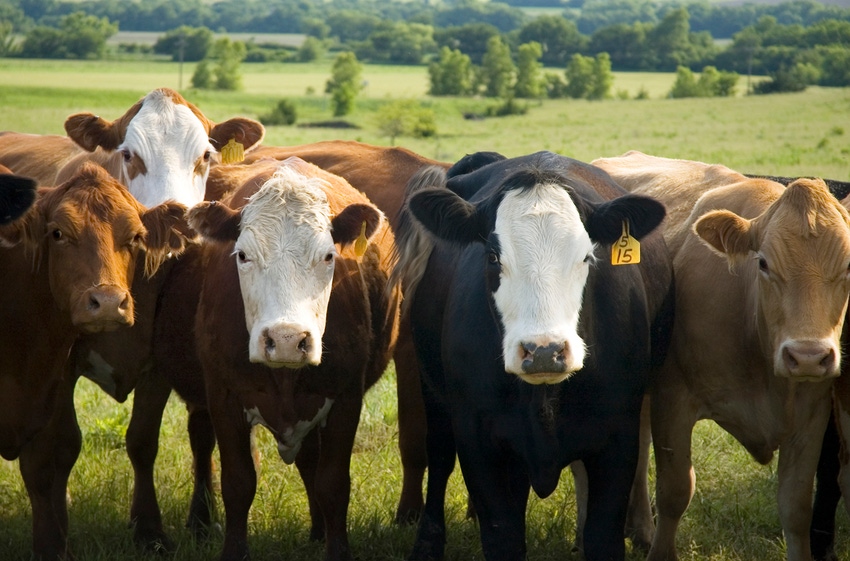June 11, 2021

In Arkansas, one farmer’s weed is another farmer’s favorite forage, Dr. David Fernandez, Extension livestock specialist and interim dean of Graduate Studies and Continuing Education for the University of Arkansas at Pine Bluff, said.
“Many cattle producers in southern Arkansas brag about their bermudagrass pastures, when bermudagrass is actually listed as a noxious weed in Arkansas,” he said. “However, there are a number of weeds most of us can agree we don’t want to see in our pastures. Not only do unwanted weeds use nutrients our grass could be using, but they also shade out the grass, preventing it from growing.”
Weeds usurp space and resources in a pasture, which can be problematic for grazing livestock. Animals may find a particular weed unpalatable and refuse to eat it. Other weeds are thorny and can damage the mouths of livestock.
Dr. Fernandez said there are several varieties of weed toxic to livestock that can overtake pastures. Livestock usually avoid toxic plants; however, animals might resort to eating these plants early in the year when they are the only green plant in sight or during times of drought when there is little or nothing else to graze on.
“Bitter sneezeweed and wooly croton – also called goat weed – are toxic to livestock,” Dr. Fernandez said. “If not controlled early, these weeds can quickly overspread entire pastures. They degrade grazing and reduce the available forage by shading out grasses.”
Toxic weeds
Other toxic plants grow in areas where the soil is moist. Perilla mint and hemlock, for example, are toxic weeds often found growing around sources of water or moist areas.
Several varieties of spiny weeds can be a nuisance for cattle producers. Pigweed and thistle varieties – including bull, musk, yellow and milk thistles – can quickly spread to cover entire pastures due to the sheer amount of seeds each plant produces. Horse nettle, multiflora rose and greenbrier are other thorny plants that can take over a pasture at a slower pace.
“For the most part, livestock avoid thorny weeds because of the pain they cause,” Dr. Fernandez said. “However, these weeds can still be a major problem because of the amount of pasture they overtake in a relatively short time.”
Other weeds such as dog fennel and sedges that are not palatable to livestock can invade large swaths of pasture where soil fertility is poor. Young buck goats and sheep will eat dog fennel, but the silicates in sedges make them unpalatable to most species.
When determining how to control weeds in their pastures, producers should remember that bare soil is an open invitation to weeds, Dr. Fernandez said. Weeds thrive where soil fertility is poor and forage plant cover is sparse.
Producers can use soil tests to adjust the pH and fertility of their soil to help control summer weeds. They can also plant warm season annuals to improve their forage base and cover bare soil with more desirable plants.
Dr. Fernandez said mowing a pasture can be an effective way to control weeds. Weeds should be mown before they have a chance to flower and set seed.
Mob grazing – the practice of allowing a large number of animals to intensively graze a relatively small section of land – can be used to destroy existing weeds, he said. When using this method, any weeds the animals won’t eat will be trampled by heavy foot traffic.
“Herbicides can also be used to control weeds effectively in pastures,” Dr. Fernandez said. “When using herbicides, always be sure to follow the instructions on the product label. Applying too little herbicide will not control weeds, while applying too much may kill the top of a weed but leave the roots alive to regrow later in the season.”
Prevent runoff
Producers should ensure that applied herbicides do not run off into nearby waterways after rainfall. They should also avoid spraying weeds on windy days, as airborne herbicides can travel into a neighbor’s yard and kill vegetable crops or ornamental plants. Cool, still mornings can also be a bad time to spray herbicides because air currents can allow suspended herbicide droplets to drift for over a mile.
For specific recommendations on the appropriate herbicides to use for the weeds in their pastures, producers should contact their local county Extension agent and review Arkansas Cooperative Extension publication MP-44 for 2021. Recommendations and laws change each year, so producers should be sure to use the most recent publication, Dr. Fernandez said.
The University of Arkansas at Pine Bluff offers all of its Extension and Research programs and services without regard to race, color, sex, gender identity, sexual orientation, national origin, religion, age, disability, marital or veteran status, genetic information, or any other legally protected status, and is an Affirmative Action/Equal Opportunity Employer.
You May Also Like




